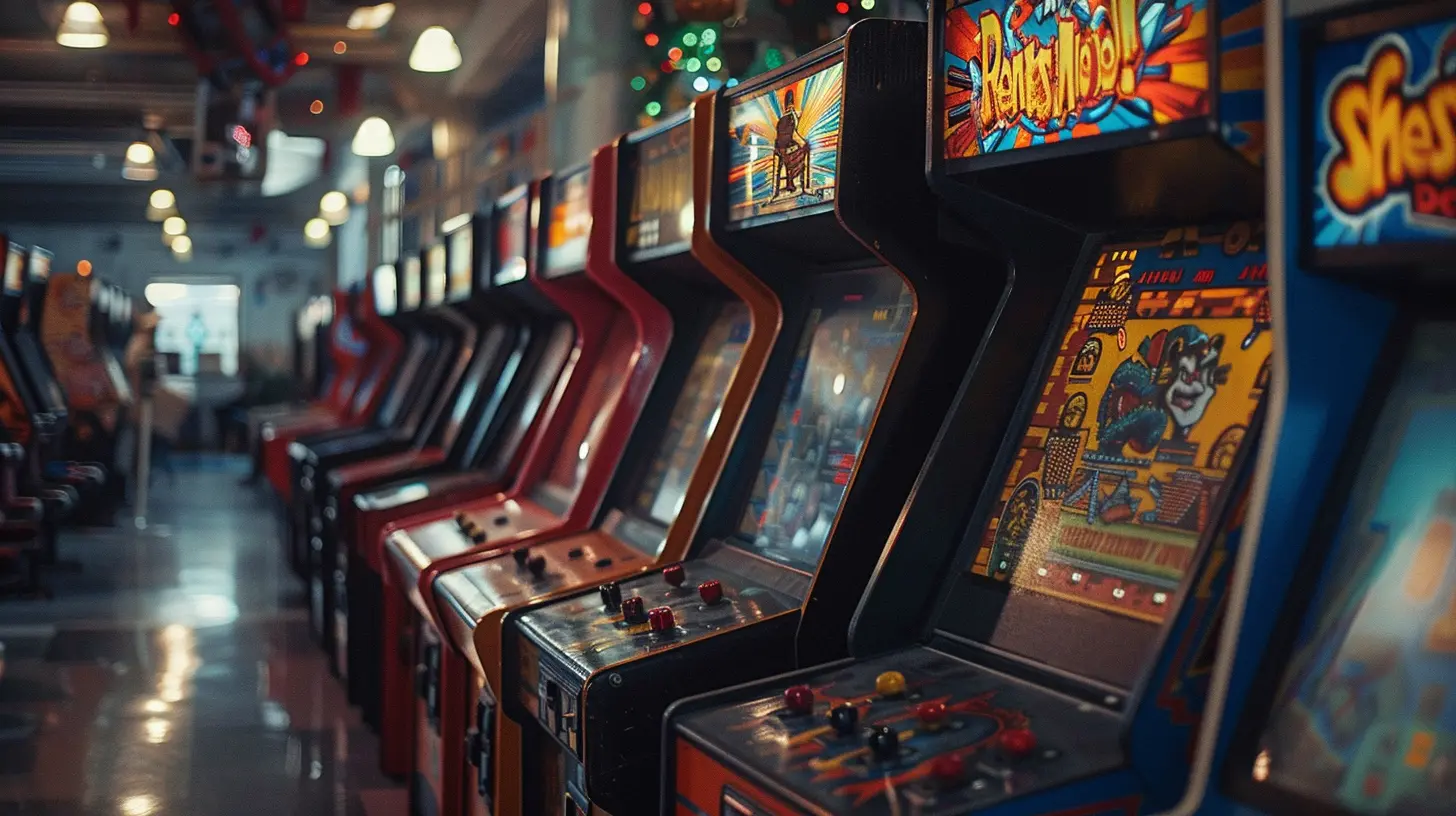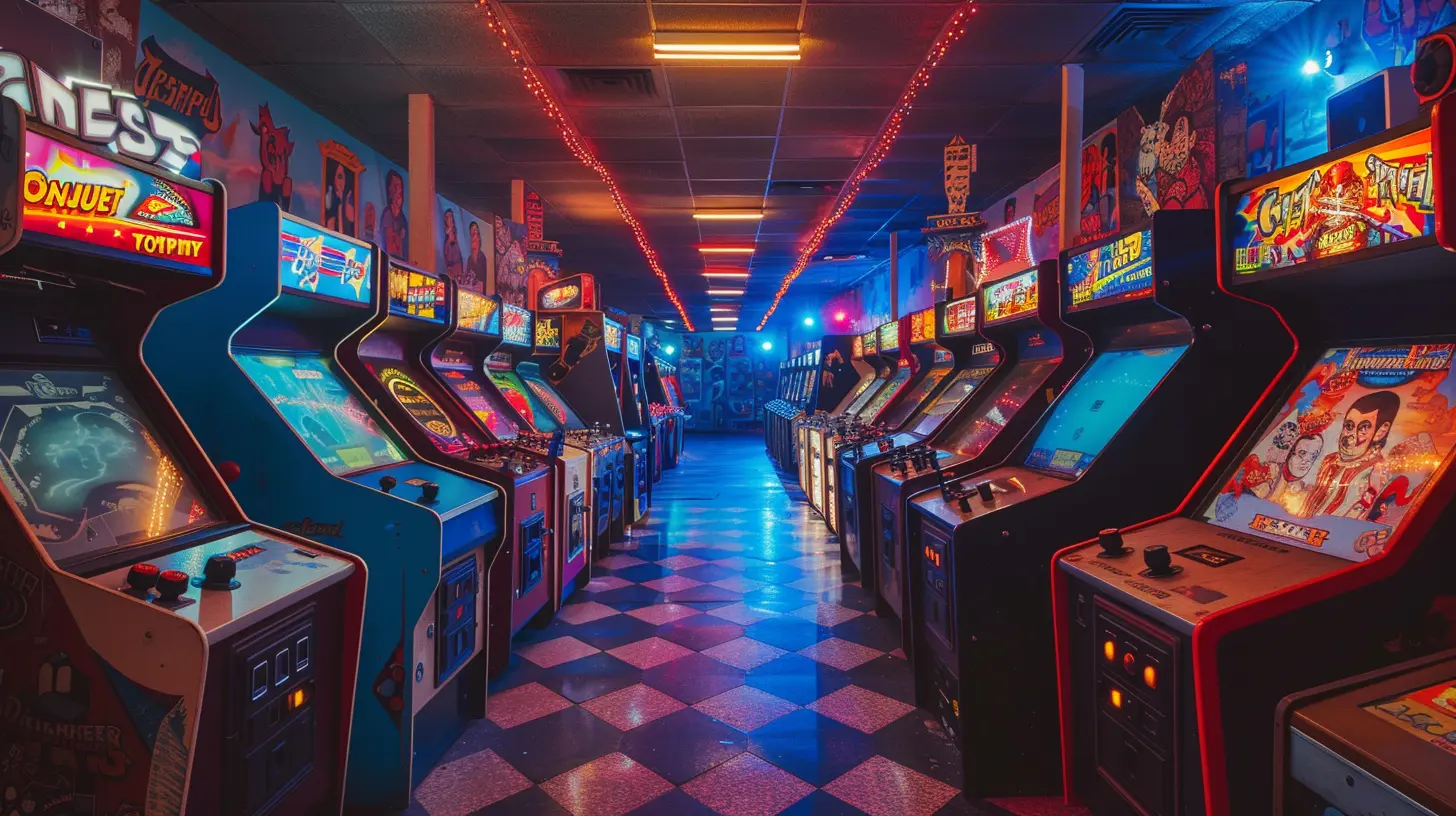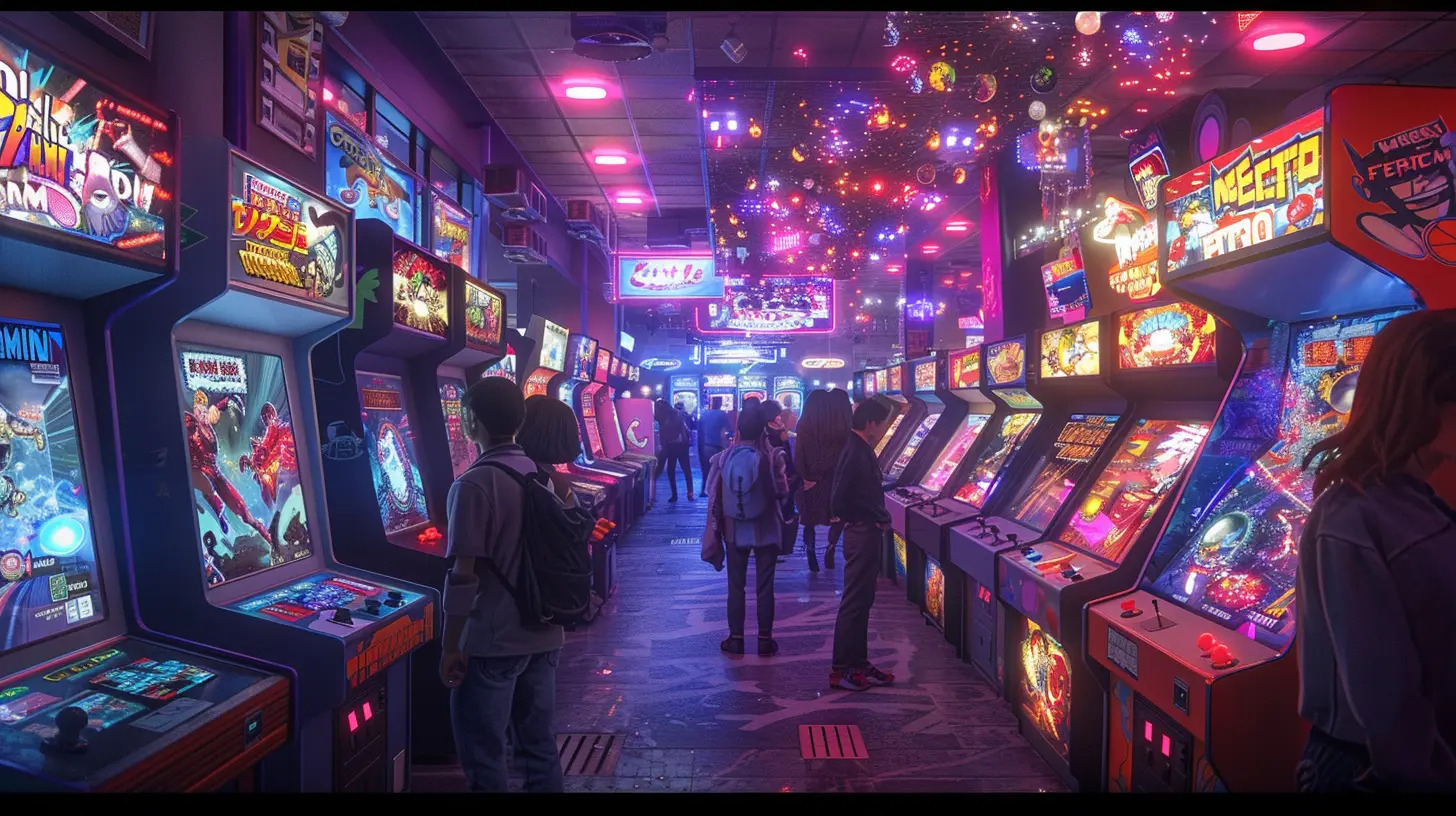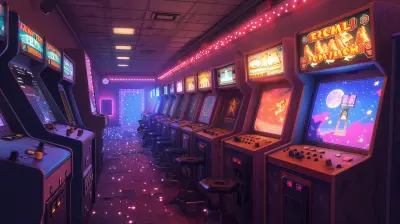From Arcades to Consoles: Games that Made the Jump
5 September 2025
Remember those thrilling times when arcades were the social hubs of gaming? Rows of glowing cabinets, the sound of quarters clinking, and that unmistakable cacophony of 8-bit explosions and victory tunes. For many, arcades were the birthplace of their love for gaming. But as home technology grew stronger, what once required a bulky cabinet the size of a refrigerator could suddenly be played on a machine that fit under your TV. This shift didn’t just signify a technological leap; it was a cultural shift. Let’s talk about the games that successfully made the legendary leap from arcades to consoles, how they did it, and why they mattered.
The Arcade Era: Heart of Gaming’s Golden Age
Arcades weren’t just about games; they were an experience. Picture it: dimly lit rooms stuffed with kids, teenagers, and even adults, each leaning over a cabinet, intensely focused, frantically pressing buttons, and wielding joysticks like their lives depended on it. These spaces were where rivalries were born, friendships were made, and high scores became the ultimate bragging right.Back in the late '70s and early '80s, arcades dominated gaming culture. Titles like Space Invaders, Pac-Man, and Donkey Kong weren’t just games—they were phenomena. But as home console technology advanced, gamers began to demand the same experiences from their living rooms. Who wanted to keep pumping quarters into machines when you could have unlimited lives at home?
Here’s where things got interesting. Not all arcade games made the transition smoothly. Some lost their charm entirely in the shift to consoles. But then there were the success stories—games that didn’t just survive the jump, but thrived.
The Pioneers That Made the Jump
Some games are like fine wine—they only get better with time. Here's a list of the arcade legends that successfully transitioned and left an indelible mark on the console gaming world:1. Pac-Man: The Yellow Icon
Ah, Pac-Man. Everyone’s favorite yellow dot-muncher with a ravenous appetite for pellets and ghosts. Originally released in 1980, it took arcades by storm. People couldn’t get enough of the simple yet addictive gameplay loop.When it came time to port Pac-Man to home consoles, the result was... mixed. The Atari 2600 version, for instance, wasn’t exactly a visual masterpiece (to put it politely). But the charm of Pac-Man endured, and later versions—particularly on the NES—got it right. This proved that a great concept can withstand even the roughest starts. By the late '80s, Pac-Man wasn’t just an arcade darling. It had become a pop culture icon.
2. Donkey Kong: The Birth of a Famous Plumber
Before Mario was saving Princess Peach, he was dodging barrels in Donkey Kong. The 1981 arcade hit introduced us to a carpenter (later rebranded as a plumber) named Jumpman, who would later evolve into gaming’s most famous mascot.The transition to consoles was a calculated move. Nintendo wasn’t just banking on good gameplay; they were branding a character. When Donkey Kong landed on the NES, it retained much of what made the arcade version iconic—tight controls, challenging platforming, and that unforgettable “dun-dun-dun-dunnn” intro music.
It was arguably this leap that set the stage for franchises like Super Mario Bros.. Without Donkey Kong, gaming as we know it today might look very different.
3. Street Fighter II: The Home Fight Club
The early ’90s saw Street Fighter II dominate arcades like no other game. It wasn’t just about beating your friends; it was about combos, mind games, and oh, those sweet Hadoukens. Players would line up, quarters in hand, just to face off in tense, sweaty-palmed matches.The jump to consoles was inevitable. Street Fighter II landed on the SNES in 1992 and was a resounding success. Almost everything that made the arcade version special—the graphics, the smooth mechanics, and the iconic roster—translated beautifully onto the console. This wasn’t just a mere port; it was a promise that home gaming could offer just as much thrill as the arcade.
Could you imagine today’s esports scene without Street Fighter II leading the way? It made competitive gaming accessible to everyone from the comfort of their couch.
4. Mortal Kombat: From Arcades to Controversy
When Mortal Kombat hit arcades in 1992, it shocked everyone. That high-octane brutality, graphic fatalities, and digitized characters captured attention instantly. Not only was Mortal Kombat fun, but it was also controversial—and controversy sells.Consoles were quick to capitalize on its popularity, with both the Sega Genesis and SNES vying for the best versions. While the SNES version lacked blood (leading to some serious fan outrage), Sega embraced the gore, making it the go-to platform for die-hard fans. The console release brought the arcade experience home and introduced new audiences to this violent, yet undeniably iconic, fighting game.
5. Galaga: A Space Odyssey at Home
If Pac-Man was the king of arcades, Galaga (1981) was its sleek, space-shooting cousin. With its fast-paced, alien-blasting action, Galaga earned itself a cult following. Its addictive gameplay loop made it a staple in arcades for years.The console port of Galaga managed to retain all the magic of its arcade counterpart. Its simplicity worked in its favor. By the time it hit platforms like the NES, the shift was seamless. Even today, Galaga is a favorite among retro game enthusiasts, proving that great gameplay never goes out of style.
Why the Jump Mattered
So, why did these transitions matter? Why should we still care about these decades-old games?The jump from arcades to consoles marked a turning point in gaming history. It was proof that video games could be more than a fleeting pastime—they could be something permanent. Arcades were fantastic, but they were limited by geography and time (not to mention your wallet). Consoles made gaming accessible to everyone.
Moreover, these shifts blurred the line between casual and hardcore players. There was no longer a need to trek to the mall arcade to enjoy Street Fighter II or Mortal Kombat. The competitive, social aspect of these games carried over to living rooms, sparking sibling rivalries and turning friends into foes.
This era also birthed the idea of gaming franchises. Characters like Mario, the ghosts from Pac-Man, and the fighters in Street Fighter II became marketable mascots. Gaming wasn’t just about the technology anymore—it was about stories, characters, and the universes they inhabited.
The Challenge of Porting
Porting arcade games to consoles was no walk in the park. Developers had to contend with hardware limitations, smaller budgets, and the challenge of replicating that arcade “feel.” Not all games made the jump successfully. Remember the infamous Atari 2600 version of Pac-Man? Yeah, let’s just pretend that didn’t happen.But for every flop, there was a triumph. The games that made it through not only became cultural touchstones but also set the foundation for modern gaming.
The Legacy Lives On
These days, we don’t rely on arcades the way we used to. Consoles, PCs, and even smartphones have become the dominant platforms. But the impact of those early arcade-to-console successes is still felt.Modern ports and remasters keep the spirit alive. Titles like Pac-Man Championship Edition and Street Fighter 6 owe their existence to the original leaps made decades ago. Even the rise of indie games channels that same energy of simple, addictive gameplay that started in arcades.
In a way, arcades haven’t truly died—they’ve just evolved into something new. The DNA of those games lives on in every console, every PC, and every handheld device.
Wrapping It Up
The leap from arcades to consoles wasn’t just a technical evolution; it was a cultural one. It brought gaming closer to home both literally and figuratively. And while arcades may now be a nostalgic relic of the past, their influence is woven into the fabric of gaming history. The next time you fire up your console or pick up a retro title, think about the journey those pixels have taken—from the flashing lights of an arcade to the comfort of your living room.all images in this post were generated using AI tools
Category:
Arcade GamesAuthor:

Aurora Sharpe
Discussion
rate this article
1 comments
Xander Diaz
Great article! It's fascinating to see how iconic arcade games transitioned to consoles, forever changing gaming culture. Nostalgic titles like “Pac-Man” and “Street Fighter” paved the way!
September 19, 2025 at 4:23 PM

Aurora Sharpe
Thank you! I'm glad you enjoyed it. The evolution from arcades to consoles truly shaped the gaming landscape!


